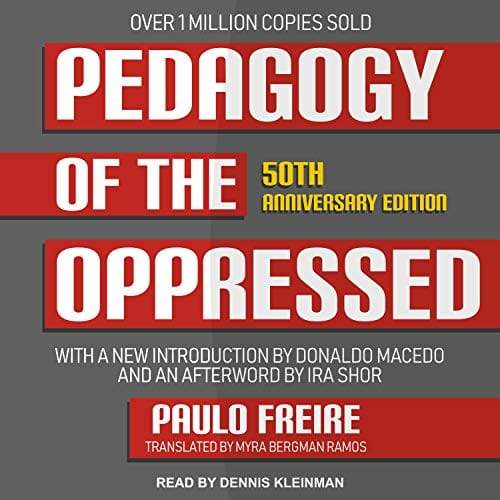Understanding Paulo Freire’s Pedagogy of the Oppressed: A Modern Guide
Learn the key concepts of Paulo Freire’s Pedagogy of the Oppressed and how educators can apply dialogical, critical teaching methods today.

Introduction
More than fifty years after its first publication, Paulo Freire’s "Pedagogy of the Oppressed" remains one of the most cited and debated works in the field of education. Far from an antiquated manifesto, the book speaks to contemporary struggles for equity, inclusion, and democratic participation in classrooms worldwide. This article offers an accessible 800-word overview of Freire’s core arguments, the historical context that shaped them, and practical insights for educators who wish to put critical pedagogy into action.
Historical and Political Context
Freire wrote during the 1960s in Brazil, a period marked by stark economic inequality and authoritarian rule. Illiteracy was widespread among the rural poor, and literacy tests were used to disenfranchise large portions of the population. As director of the Brazilian National Literacy Program, Freire witnessed firsthand how traditional teaching methods kept oppressed communities voiceless. His experiences with adult literacy campaigns laid the groundwork for a pedagogy designed not simply to teach reading but to awaken political consciousness.
Core Concepts of Freirean Pedagogy
Humanization vs. Dehumanization
For Freire, education is a profoundly human act. Oppression dehumanizes both the oppressed and the oppressor by denying their full capacity for reflection and action. To reverse this condition, pedagogy must aim at humanization—restoring agency, dignity, and solidarity.
Praxis
Freire famously defined praxis as the inseparable unity of reflection and action. Knowledge, therefore, is not static information deposited into passive minds; it is created when learners critically reflect on their reality and act to transform it. This emphasis on transformative action sets Freire apart from purely cognitive or skills-based approaches.
Banking vs. Problem-Posing Education
Freire’s metaphor of the "banking" model describes classrooms where teachers "deposit" knowledge and students "withdraw" it for exams. Such education assumes the teacher knows everything and the student knows nothing, reinforcing hierarchical power and discouraging critical thought. In contrast, problem-posing education treats knowledge as an evolving construct derived from students’ lived experiences. The teacher becomes a co-investigator who facilitates inquiry, formulates problems with learners, and cultivates a dialogical space where everyone teaches and everyone learns.
Dialogue and Conscientization
Central to Freire’s method is dialogue—authentic, horizontal communication grounded in mutual respect. Dialogue is not mere conversation but a collaborative search for truth that recognizes the historical and social conditions of participants. Through dialogue emerges conscientização, often translated as "conscientization" or critical consciousness. This is the process by which learners perceive and name the social, political, and economic contradictions that shape their lives, thereby enabling collective action against oppressive forces.
Modern Applications
Although Freire worked with adult peasants, his ideas translate to diverse educational settings, from urban high schools to online learning environments. Project-based learning that addresses community issues exemplifies problem-posing education. Service-learning courses allow students to merge academic study with civic action, embodying praxis. In multilingual classrooms, encouraging students to use and honor their home languages resists linguistic oppression and validates cultural identity. Even corporate training programs draw on Freirean dialogue to foster inclusive decision-making and innovation.
Critiques and Misunderstandings
Freire’s passionate language occasionally verges on revolutionary rhetoric, leading critics to dismiss his work as ideologically biased. Some argue that talk of "oppressors" and "oppressed" simplifies complex social relations. Others worry that emphasizing political action in schooling may overshadow academic rigor. Yet many of these critiques stem from superficial readings. Freire never rejected discipline or expertise; he opposed authoritarianism. Nor did he advocate indoctrination—dialogue requires openness, not the substitution of one dogma for another.
Key Takeaways for Educators
First, know your learners’ contexts. Curriculum content gains meaning when connected to real lives. Second, replace top-down lectures with participatory activities such as dialogic circles, problem-based projects, and reflective journals. Third, assess learning not only through tests but through demonstrations of critical thinking and community engagement. Finally, cultivate humility; educators practicing Freirean pedagogy acknowledge their own learning journey and invite students to question even the teacher’s assumptions.
Conclusion
"Pedagogy of the Oppressed" challenges us to rethink what education is for—reproduction of the status quo or liberation of human potential. By embracing dialogue, problem posing, and praxis, educators can turn classrooms into incubators of critical consciousness and social change. In an era of widening inequality and polarized discourse, Freire’s call to link reflection with action rings more urgent than ever. Whether you teach adults, children, or peers, integrating Freire’s insights can transform learning from a passive transaction into a collective quest for justice.



